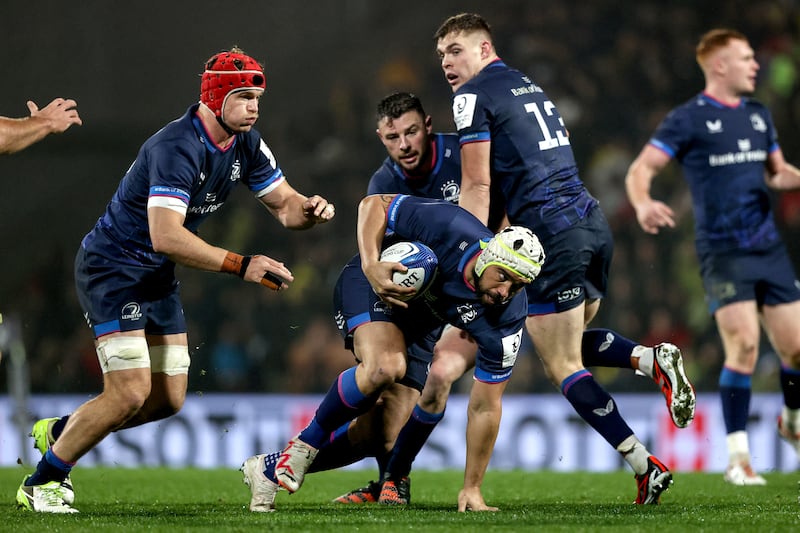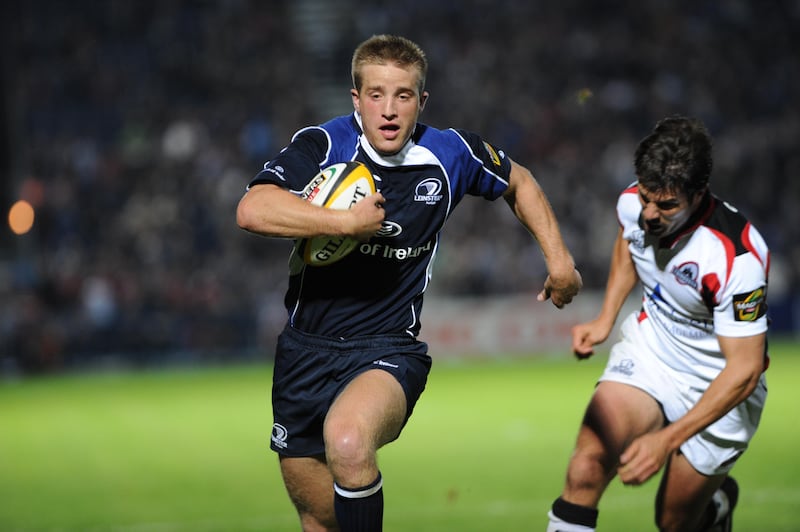For the first time in a long time Leinster’s squad depth looks ill equipped to manage the twin-track approach of Champions Cup and URC as they pursue their quest for their first silverware since 2021.
It is a statement that comes with a caveat in acknowledging that Leo Cullen’s squad have put themselves in an excellent position in Europe and currently lead the URC table. But injuries, moderate regeneration in personnel terms, and the continuing search for Johnny Sexton’s permanent successor have left a few holes.
Leinster will begin preparation for this block of games safe in the knowledge that they can control the controllables. Saturday’s opponents Stade Français have only managed one losing bonus point so far in the tournament. A trip to a resurgent Leicester Tigers may be more problematic but Leinster have managed to juggle competing on two fronts over the past decade. There is an argument, though, that the model is being tested beyond the capabilities of the existing squad.
Morne Steyn’s penalty when the Bulls won at the RDS two seasons ago and Jack Crowley’s moment of brilliance to end Leinster’s URC campaign last May are the two most recent examples of opponents exposing Leinster’s fallibility. Europe has been a cruel mistress since 2018.
Ireland will miss Mack Hansen, Leinster have cause to regret the neck injury to Jimmy O’Brien that will keep him sidelined for a couple of months. In terms of back three options they are looking a little threadbare beneath the frontliners, a state of affairs not of recent vintage.
James Lowe is due back for his first game since the World Cup on Saturday, which is timely, and he should be joined by Hugo Keenan and Jordan Larmour in the back three. Leinster have very little cover in this area of the field, so any injury or loss of form would make them even more vulnerable to pace in the wider channels than they already are.
Genuine wings with pace have been a rarity, while there has been a dearth of centres from time to time too, although the emergence of Jamie Osborne and Ciarán Frawley has added a little depth in footballing terms.

Leinster have traditionally looked to overseas players in the back three, with Isa Nacewa, Zane Kirchner and most recently Lowe to fill a vacuum. Charlie Ngatai has been Leinster’s most impressive back so far this season and showed exactly why Leinster went after the former All Black.
This has raised a few questions about the quality of players coming through the Leinster system. As Warren Gatland observed 20-plus years ago, “if you are good enough you are old enough”. This was the case when I was 18, so too for Luke Fitzgerald and more recently in the cases of Sam Prendergast and Fintan Gunne.
It is important to note that the Leinster academy is largely a manifestation of the schools’ system, and how they are coached and think about rugby is largely out of the province’s control. Osborne and Frawley, two outliers, came through the club system with Naas and Skerries respectively.
It is possible that a less structured and patterned club pathway, coupled with intelligent, less micromanaged coaching helped make Osborne and Frawley the players they are today; comfortable on the ball, happy to pick passes, with clever kicking games. Or just imaginative with the ball and, importantly, they know how to beat a defender.
Too many players come through the schools’ pathway comfortable with systems, and there is a genuine lack of individuality and flair in the outside backs that Leinster have been producing. I fully accept the bar is high in Leinster, but the quality has just not been there on a consistent basis.
This is in part due to the way we coach in our underage school system, where there is a preoccupation with trying to win Junior and Senior Cups. This creates athletes that understand and follow patterns, in both attack and defence.

Invariably many struggle as they move up the ranks, not necessarily due to a skills deficit but rather to a rugby IQ deficiency that emerges as the standard rises. Rob Kearney and Luke Fitzgerald were exceptional when breaking through, and the initial issue was trying to persuade them to refine their instinct to take off and try to slalom past the entire opposing team.
They found a lovely balance and became incredible players. However, the sense I get now is that we are at the other end of the spectrum, forced to encourage creativity. The men’s senior game is still heavily structured and patterned, and the attack for most teams is about building a shape to create a mismatch or for key players to engineer those mismatches, players like Jamison Gibson-Park, Marcus Smith or Finn Russell.
Underage players that are identified in the Leinster system get more support than ever before, strength and conditioning programmes, nutrition advice and rugby technical support. I can recall the mindset of a young rugby player and I would be willing to bet that the focus from the players in these programmes will be heavily biased towards diet and fitness, and a little less so on the skill side of the game.
In a mind eager to succeed, the focus will go to the area where they can deliver the biggest improvement as quickly as possible. A player’s physical capacity doesn’t stall by waiting to lift weights; they will catch up. However, the window to bed in genuine rugby skills is limited, and I think we have that balance a little wrong in some positions.
The art of decision making has slowly been eroded in the game, it is now the responsibility of a few key players in every team, and I believe the game is poorer as a result. It’s always been a quirk of the modern game, so much emphasis put on size and strength, yet it is the sleight of hand or skilled boot that decides games.
Richie Mo’unga’s show and go at the line against Ireland, Sexton’s drop goal against France; skills and decisions honed over years of practice. If attacking rugby is the bedrock of Leinster rugby, we need to develop players with that vision and courage, this might require breaking the existing mould to discover the next game-changing talent.


















